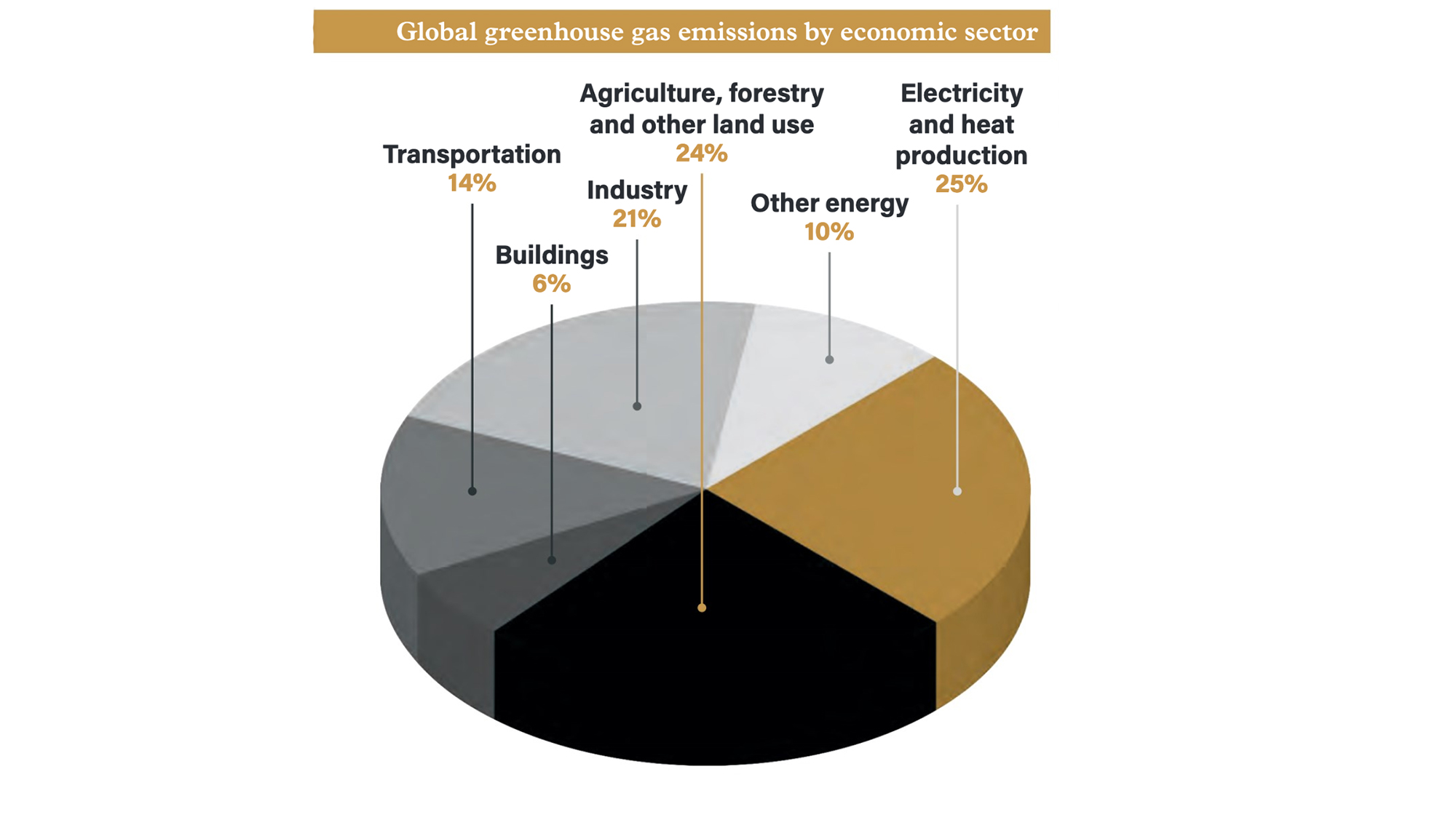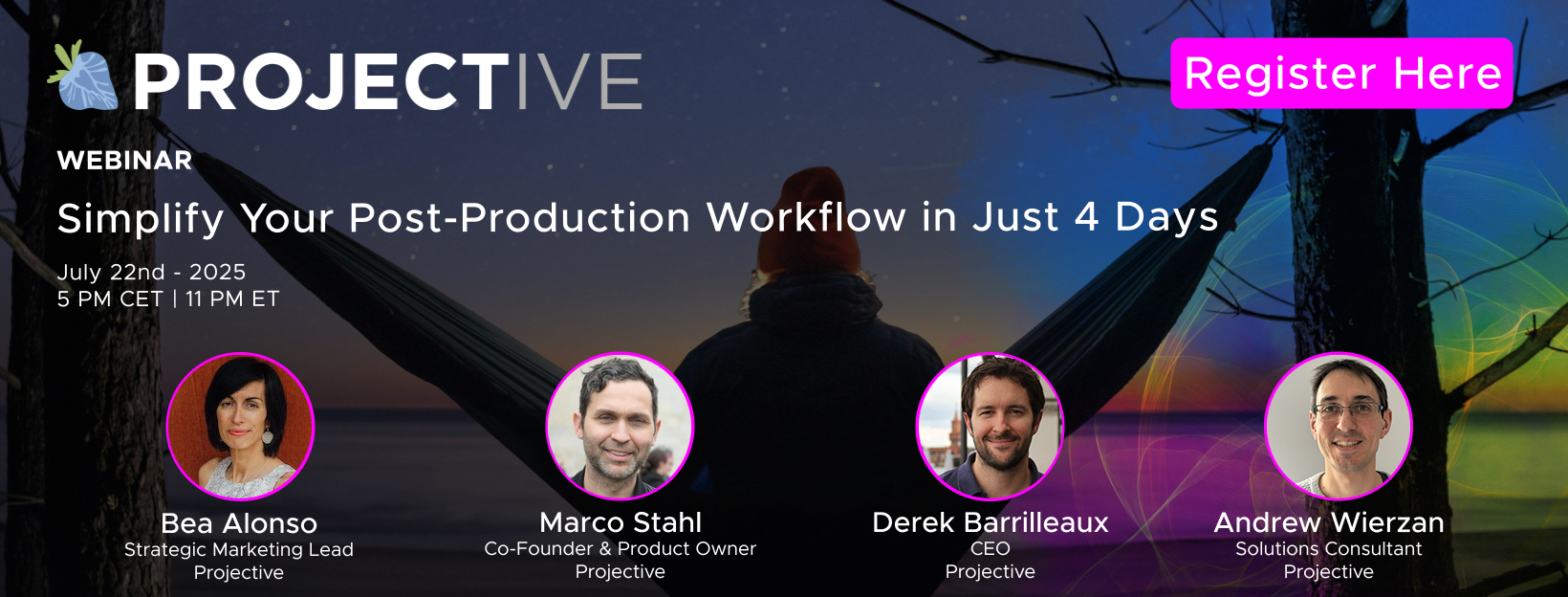How low can you go? The road to zero carbon

Posted on Dec 6, 2021 by Neal Romanek
Global heating is here – and with it the threat of dangerous tipping points in climate and natural ecosystems. While we can’t control physics, we can stop adding fuel to the fire. In this Round Table, our guests discuss steps the industry needs to take to reach zero carbon broadcast emissions
The tech vendors
Brandon Cooper, president, First Mile Technologies
Liam Hayter, senior solutions architect, NewTek
Ian McDonough, CEO, Blackbird
Peter Sykes, strategic technology development manager, Sony
The moderator
Neal Romanek, editor, FEED
Neal Romanek: You all work with a variety of content producers, broadcasters and fellow technologists. What have they been saying about sustainability and zero carbon broadcast? How high is it on their agenda?
PETER SYKES: At Sony, we’ve been monitoring conversations for a long time, and it’s clear there is a big industry shift and focus on sustainability. Media and entertainment companies, and people in that space, are trying to find out the impact of their operations throughout supply chains. And they’re looking at how to increase transparency and the sustainability credentials of everyone they’re working with. The conversations are wide-ranging. A lot of industry bodies are examining this on behalf of their members – whether they’re producers, media, companies, technologists or vendors. It’s a very intense discussion at the moment.
BRANDON COOPER: What we’ve seen in Canada is a real push towards sustainability. We even had a VP of sustainability when I was working for William F. White years ago, one of the largest rental companies across Canada. And Sim, who provide cameras and generators, are offering electric power sources. Technology vendors in Canada are seeing this as an opportunity to contribute, to help the industry scale back – on its waste, energy usage and in a host of other ways. And you see productions coming to vendors, too. Asking for help with their initiatives to get to net zero. There is also huge support from the CMPA (Canadian Media Producers Association) and other organisations taking these important aspects into consideration.

LIAM HAYTER: Especially over the last 18 months, a lot of our customers realise the days of moving around big, heavy broadcast equipment are kind of behind us now. We’ve adapted to remote production, whether it’s using video conferencing or shifting to distributed cloud models, and now on-premises distribution. There is more demand from customers about linking different remote sites, or bringing in talent without necessarily moving crews or equipment. It’s something that’s definitely not going to go away. Just moving less equipment is going to help lower people’s carbon footprints.
IAN MCDONOUGH: For the customers that we have engaged with, I don’t think it’s high enough on their agenda yet. There’s still a bit of lip service, saying ‘we’d love to do this’, but I don’t think it’s under way in terms of how they’re really going to tackle it. Yes, there is more remote production. But there’s also a hell of a lot of video that’s being shifted and moved around. Hi-res and 4K video that is being moved around when it doesn’t necessarily need to be. There are companies saying ‘we want to be net zero’, but I think there’s a bit of lexicon confusion, because net zero is very different from just carbon neutral. The latter means you buy carbon offsets and use wind power sometimes. But that’s just passing the parcel to somebody else. There’s an opportunity for the industry to come together, clarify what it needs to do, then get on with it. But offsets have been very confusing – not just for our industry – and it’s quite controversial, with companies thinking they’ve gotten away with it. We need to push harder.
Carbon neutral means you buy carbon offsets. But that's just passing the parcel to someone else
Neal Romanek: Companies will eventually need to drastically reduce emissions, rather than rely on slow, incremental change. What do you think will force them to make the necessary big leaps?
BRANDON COOPER: There’s no question that it’s difficult. We see in our industry that nothing changes unless it’s forced. A tsunami had to occur before we moved off physical tape-based recording to file-based (1). And now a pandemic has finally pushed us into remote production. First Mile Technologies is a company that works with Dejero to introduce ways of using connectivity to enhance production, and it took the pandemic to get us there. It’s tough. I don’t know if it’s incentives or sanctions, or just absolutely new rules that have to be implemented – the question is by whom. But forced change is the only thing that ever amounts to anything in the part of the business I’m in.
IAN MCDONOUGH: You’re absolutely right. People have to know what to do first. It’s good to have fines or incentives – yet at some point forced change needs to happen. But I think a practical guide should be issued, so people know what they have to do – not move media around, or not send a planeload of people to Japan or Brazil. If they can see practical steps, then people can adhere to them. Firstly, someone has to decide those steps.

LIAM HAYTER: We’ve got the technology and components to help reduce carbon emissions. Can we go completely to zero? There’s been little analysis on the carbon footprint of TV productions, or the impact of remote production versus on-site. We need to focus on that to navigate the best combinations.
IAN MCDONOUGH: We put a report out in the spring, called ‘Video Shouldn’t Cost the Earth’. It analysed on-premises and cloud-based editing workflows, and then cloud-native. It was surprising. Shifting that content around is very costly from a carbon point of view. The cloud native solution was actually 91% more carbon efficient than an on-premises installation.
PETER SYKES: Sony Professional is a product and solutions supplier. And there’s nothing like pressure from the end user to change behaviour. We know that a lot of media companies have sustainability high on their agenda. As a supplier, we take that on board. This will determine, to an extent, our activities. The other part is awareness of where the problem lies. Guidelines from Bafta’s sustainability organisation, Albert, is a good resource. There’s analysis based upon genre and where in those production chains the problem areas lie. As has been said, movement of equipment and people has a huge impact, certainly in things like drama production and factual, especially if it’s international. At the Digital Production Partnership Leaders’ Briefing last year, media companies were asked to identify three strategic priorities. Sustainability came up over and over again.
We see in our industry that nothing changes unless forced
Neal Romanek: What are the positive changes that could come for businesses having zero carbon broadcast?
BRANDON COOPER: We saw it during the pandemic. On a commercial set, you used to have 30 crew members – plus 20 client agency people on every set, every day. A lot of these people were coming from out of town, or out of country. They’re flying, driving and consuming when on-set. Suddenly, client agency staff are watching streams from a set virtually, but able to stay involved creatively and make approvals. I don’t know if it will necessarily continue that way, but instead of 20, maybe you only have two or three. So, we start reducing the number of bodies travelling, and how many people are consuming on-set. We can also start looking at the media. We’re still moving media around like we used to move film cans. At the end of the day, after working 15 hours, I used to take 20 cans of film to the lab and drop it in a slot. Now, I’m doing the same thing with hard drives. We’re in a digital age, so why are we doing that? There’s so many different ways – and if everybody puts their drop in the bucket, all of a sudden you start seeing measurable success.
LIAM HAYTER: The actual footprint of the technology is shrinking, just by moving to software. What used to be a large-scale OB van, can now be done in much smaller, more efficient vehicles, with a little crate that slots in the back. And customers that have started to build around software with an NDI mindset, have gone from events in auditoriums where they had to turn everything inside out, to using their own in-house AV. That live feed can be pulled directly into the post facilities, to be edited or archived without having to shuttle content around. You can just send a cameraman with maybe a few PTZ cameras to the site, which is going to be pretty liberating.

PETER SYKES: There’s an opportunity with an increase in virtual production – with LED screens used in a central film studio somewhere, and game engine technologies feeding the screens that map to the camera movement. Backgrounds can then track what the cameras are doing. And the actors can see the set that they’re working in and, again, it removes the need for people to travel.
BRANDON COOPER: Remote production can save on the environmental impact on locations. Sets are like a travelling circus. They roll into a location and wreak havoc on the habitat. A lot of this is about open minds – it’s taking technology and using it to your advantage. Not just to increase workflow efficiency, but be environmentally more sound. It takes a producer with an open mind, who can move away from the traditional way of doing things. A new way of considering, setting up and executing your production, regardless of size. So, that’s equally as important. We can have all the mechanisms in place to be able to do it, but it takes a producer with an open mind to be able to embrace it, then make sure that their productions follow.
IAN MCDONOUGH: A lot of technology out there offers more efficiency – not just from a carbon and power perspective, but from a time point of view. They can be very economical, with regards to both costing and accessibility. We are looking for a better experience around sustainability and power, but should build it around efficiency and that user feedback.

Neal Romanek: What about the big public cloud entities, like AWS or Google? How are they going to cope with this and how can they help?
BRANDON COOPER: They have to find ways to make business more efficient. Somebody, at some point, is going to have to put the hammer down. I think Amazon recently abandoned some of their ideas of reducing their carbon footprint (2). It’s become less of a priority for them, and it needs to be more. They’re the new airline industry, in terms of carbon emissions and irresponsibility. But who regulates that? The major Hollywood studios all have initiatives, to reduce everything from wastewater on their studio sites, to going paperless with call sheets, to donating food from sets. If the large studios can do that, then these public
cloud companies can do the same.
LIAM HAYTER: There’s a lot to be said for distributed production, too. We get bogged down with cloud and the idea that we’re going to put everything in data centres. But trying to track how that is powered, and its environmental impact, can be very difficult. If you work on-premises, you know who is providing the energy to power your location – and who is powering the remote sites you are connecting to. You can then have some control and still use cloud where it makes sense. But just depositing everything into the big cloud companies, without getting the data about what they’re doing, is going to be part of the challenge. One of the biggest things we could do globally is ensure good connectivity. In London, I’ve got fibre, but there are still people in England who can’t even get 100Mbps. How are you going to do remote production in those places? Or how can we ensure people around the world are telling their stories? If we can get that connectivity piece globally, that is immediately going to make these challenges easier for everyone.

Neal Romanek: Some scientists are saying that a large amount of global heating is already locked in, possibly as much as 3 or 4ºC. Like it or not, over the coming decades we’ll be seeing increasing disruption of infrastructure. How do you think people should prepare for this?
IAN MCDONOUGH: Speed is of the essence. It’s no good sitting around, talking and contemplating over a number of years about what we’re going to do. You need to utilise the technology that exists in front of you, roll it out widely, and get people to understand what it is, so they can act. I’m terrified about the next ten to 15 years already. If we act together, and smartly – and don’t just sit here and pontificate – something can be done. I’m optimistic about that. But we need to act.
PETER SYKES: The pandemic was an example of an event that required immediate action. Not rolling out projects in months, but reacting in days or hours was a great illustration of how companies can move. We saw organisations advance technology road maps by anything from six months, while some were even saying they brought it forward two or three years. They were doing things they had planned for 18 months down the line, but it was accelerated. There is a great Committed to Sustainability programme being run by DPP (3), looking at the credentials of suppliers into the industry. There’s a fairly rigorous investigation into the practice within an organisation around production. They’re looking for greenhouse gas emissions, waste and water. When the will is there, you can move relatively quickly.
It's no good sitting around, talking over a number of years about what we're going to do
BRANDON COOPER: There is $250,000 to $750,000 lost per day for every production, because of weather. When you think in terms of changing weather affecting productions everywhere, it’s scary. Using what’s in front of you, making sure you are efficient and intelligent, is a big thing. So much of the onus comes on the individual, and open-minded people considering the results of their actions. When there are so many different singular things happening on a production, they add up pretty quickly. Virtual production can be a help. Why take a whole unit to the desert in the summer, when potentially you can shoot indoors in a controlled environment?
LIAM HAYTER: We have the building blocks for all aspects of media production to help start drastically reducing this. I hope some of the lessons learned over the pandemic would stay, but I’m already getting requests to travel, and I say ‘no, I can do that remotely’.

Neal Romanek: What would be the one thing you would tell a client to do if they wanted to lower their carbon footprint?
PETER SYKES: Look at suppliers and how they address environmental concerns, in terms of the production of goods and service delivery. At Sony, we are aiming for zero environmental footprint by 2050. That sounds like it’s in the distance, but there are milestones towards that final target. So, whether it’s reducing greenhouse gases, or bringing in 100% renewable energy earlier, you should monitor the activities of the companies you’re purchasing services
and products from.
BRANDON COOPER: You need an open mind, to look at the way your people and processes work. Then, find a way to review them, so you can put sustainable methods up against the ones you currently use – and make a choice. We work with Dejero connectivity solutions to connect people from remote sets to contributors all over the world, in real time. If you consider how much we consume, not only on set, but travelling to locations, this is an immediate reduction in carbon footprint. Look at everything you do when starting a production and ways you can change, even if they hurt a bit.
How can we use what we have more intelligently?
IAN MCDONOUGH: As an industry, we should keep honing solutions for customers. I agree about not moving people around, but also don’t move heavy-duty, high-res 4K or HD content if you don’t need to. There’s an adage about shifting a high-res piece of video from LA to New York – that ultimately it’s cheaper to put it in someone’s luggage and send by plane, because you’ll use less power, carbon and time. Only move that stuff if you really need to.

LIAM HAYTER: Curbing travel is something we’ve covered ad nauseam. I also think the distributed production model opens up so many doors for reducing things automatically. And we don’t use enough commercial, off-the-shelf hardware. Everybody’s got cameras in their mobiles, tablets and laptops. People don’t need to keep buying equipment. How can we use what we have more intelligently? Also, if we start rolling backwards from what we’ve learned over the past 18 months, it would be a shame. We can improve production efficiencies further, very quickly, if we keep iterating. Despite recent horrors, the response of the media industry has been amazing.
This Round Table first featured in the winter 2021 issue of FEED magazine.











